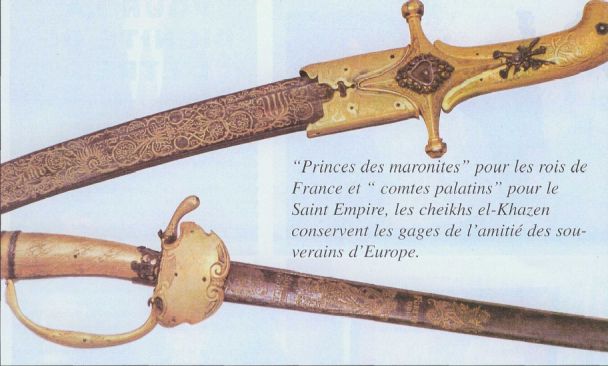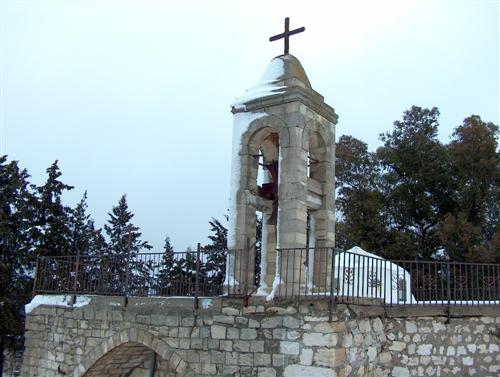By Ben Gilbert BEIRUT — “The bombs are dropping on Beirut with Snoop Doggy Dogg!” said rap music fan Nick Haddad as he walked out of the Snoop Dogg show in the Lebanese capital this past weekend.
The 18-year-old Lebanese Canadian was of course referring to the “bombs” in the lyrics of Snoop Dogg’s raps, not the other bombs that some people may associate with Beirut.
At 1 a.m., Haddad and his 16-year-old British friend of Lebanese descent were looking to find the Snoop Dogg after-party, by no means the first A-List gathering seen in Beirut this summer. The American rapper has followed in the footsteps of Paris Hilton and Charles Aznavour as the latest international "name" on everyone's lips in this newly calm city. He entertained several thousand people at a convention center near downtown Beirut on Thursday night.
The visits, coming after three years of war and security problems, is just one sign of Lebanon quickly regaining its title as the party and cultural headquarters of the Middle East.
From visits by glitzy heiress (and perennial photo-opportunist) Paris Hilton in early July to film festivals, gallery openings and rock bands old and new — Keane and Deep Purple recently performed here — Lebanon’s summer season is being called the most successful since the assassination of former Lebanese Prime Minister Rafiq Hariri in February 2005.
Snoop Dogg’s show reminded many in Lebanon of the last visit by a major American rap artist in June 2006. That’s when 50 Cent performed to a similarly enthusiastic audience of teenagers and rap aficionados.
By Ben Gilbert - GlobalPost -
KFARDEBIAN, Lebanon — The music thumped and the tall, slim models wore barely anything, despite the snow covering the hill above them. The wind blew, the sun shone and 2,000 people in ski boots and designer sunglasses gawked and snapped pictures as girls in skimpy nightgowns paraded on the catwalk.
This was the scene at Lebanon’s Mzaar ski resort during the annual weekend lingerie show in early March.
A table full of British, South African and Australian expats on a weekend skiing vacation from Dubai looked on. They drank Lebanese beer from green bottles and enjoyed the view of the mountains. And the models.
“We came to ski but this seems like a better option today,” said Matthew Trehy, a designer originally from London. “This is an added bonus.”
“It kind of doesn’t fit with the moral and cultural values that you always get told about in the Middle East,” said Dubai-based architect Katherine Chambers, with an iced bottle of white wine sitting on her table. “But hey, everyone seems to be enjoying it. But the models must be so cold.”
By Ben Gilbert - GlobalPost,
YAMOUNI, Lebanon — Lebanese hashish farmers and dealers have had an easy go of it the past three years, growing the crop freely and in large quantity due to the Lebanese Army’s preoccupation with a war, sectarian violence and assassinations.
However, Lebanon’s security situation has calmed in the past year. As a result, the army has been available to help the lightly armed national police wipe out about six square miles, or an estimated 95 percent, of the Bekaa’s hashish crop. The bust and clear-out operation began in September, according to Gen. Michel Shakkour, the Lebanese Internal Security Forces (ISF) officer in charge of the eradication.
In the fields between two hills on the backside of Yamouni, a town that sits at an altitude of 5,000 feet on the edge of what was once one of the breadbaskets of the Roman Empire, Lebanon’s Bekaa Valley, only the barren fields remain, with a few scrawny hashish plants poking through the dry soil. It seems almost an affront to the history of this place, steeped as it is in hedonistic mythology. Yamouni is, after all, only a few miles from where the Romans chose to erect their temple to Bacchus, the god of wine, on the dry and arid flat land perfectly suited to growing grapes.
President urges judges to ensure institution’s independence
By Elias Sakr
Daily Star staff
Khazen History


Historical Feature:
Churches and Monasteries of the Khazen family

St. Anthony of Padua Church in Ballouneh
Mar Abda Church in Bakaatit Kanaan
Saint Michael Church in Bkaatouta
Saint Therese Church in Qolayaat
Saint Simeon Stylites (مار سمعان العامودي) Church In Ajaltoun
Virgin Mary Church (سيدة المعونات) in Sheilé
Assumption of Mary Church in Ballouneh
1 - The sword of the Maronite Prince
2 - LES KHAZEN CONSULS DE FRANCE
3 - LES MARONITES & LES KHAZEN
4 - LES MAAN & LES KHAZEN
5 - ORIGINE DE LA FAMILLE
Population Movements to Keserwan - The Khazens and The Maans
ما جاء عن الثورة في المقاطعة الكسروانية
ثورة أهالي كسروان على المشايخ الخوازنة وأسبابها
Origins of the "Prince of Maronite" Title
Growing diversity: the Khazin sheiks and the clergy in the first decades of the 18th century
Historical Members:
Barbar Beik El Khazen [English]
Patriach Toubia Kaiss El Khazen(Biography & Life Part1 Part2) (Arabic)
Patriach Youssef Dargham El Khazen (Cont'd)
Cheikh Bishara Jafal El Khazen
Patriarch Youssef Raji El Khazen
The Martyrs Cheikh Philippe & Cheikh Farid El Khazen
Cheikh Nawfal El Khazen (Consul De France)
Cheikh Hossun El Khazen (Consul De France)
Cheikh Abou-Nawfal El Khazen (Consul De France)
Cheikh Francis Abee Nader & his son Yousef
Cheikh Abou-Kanso El Khazen (Consul De France)
Cheikh Abou Nader El Khazen
Cheikh Chafic El Khazen
Cheikh Keserwan El Khazen
Cheikh Serhal El Khazen [English]
Cheikh Rafiq El Khazen [English]
Cheikh Hanna El Khazen
Cheikha Arzi El Khazen
Marie El Khazen